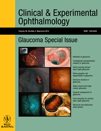
CLINICAL AND EXPERIMENTAL OPHTHALMOLOGY
Scope & Guideline
Elevating Standards in Clinical Ophthalmic Research
Introduction
Aims and Scopes
- Clinical Research in Ophthalmology:
The journal publishes original clinical studies that investigate various aspects of eye diseases, treatments, and outcomes, providing valuable insights into patient care. - Innovative Surgical Techniques:
Research on novel surgical methods, device innovations, and procedural advancements in ophthalmology, including cataract surgery, glaucoma procedures, and retinal surgeries. - Epidemiology and Public Health:
Studies that explore the prevalence, risk factors, and health disparities related to ocular diseases, emphasizing the importance of public health initiatives and screening programs. - Genetics and Molecular Biology:
Research focused on the genetic underpinnings of eye diseases, including inherited retinal disorders, glaucoma, and age-related macular degeneration. - Ocular Imaging and Diagnostics:
Advancements in imaging technologies such as optical coherence tomography (OCT), fundus photography, and their applications in diagnosing and managing ocular conditions. - Patient-Centered Care and Quality of Life:
Investigations into patient experiences, satisfaction, and quality of life associated with various ocular conditions and treatments.
Trending and Emerging
- Artificial Intelligence in Ophthalmology:
There is a growing trend in the use of artificial intelligence for diagnostic purposes, treatment planning, and enhancing surgical techniques, showcasing its potential in improving patient outcomes. - Telemedicine and Remote Care:
The COVID-19 pandemic has accelerated interest in teleophthalmology, with increasing studies focused on remote consultations, digital health technologies, and their impact on patient care. - Sustainable Practices in Ophthalmology:
Research exploring the environmental impact of ophthalmic practices, including the carbon footprint of surgical procedures and the use of eco-friendly materials in eye care. - Integration of Genomic Testing in Clinical Practice:
An emerging focus on the application of genetic testing for personalized treatment plans in conditions like glaucoma and inherited retinal diseases. - Longitudinal Studies on Chronic Eye Conditions:
There is a rise in longitudinal studies examining the progression and long-term outcomes of chronic eye conditions, such as diabetic retinopathy and age-related macular degeneration.
Declining or Waning
- Traditional Methods of Treatment:
There is a noticeable decrease in studies focusing solely on traditional pharmacological treatments, as the field increasingly embraces innovative approaches and combination therapies. - Basic Science Research:
While foundational research remains important, there has been a shift towards applied clinical research and translational studies, leading to fewer publications centered solely on basic science. - Single-Center Studies:
The trend is moving towards multi-center collaborations and larger cohort studies, resulting in a decline in the number of single-center studies being published.
Similar Journals

Eye and Vision
Advancing the frontiers of ophthalmology and visual sciences.Eye and Vision, published by BMC, is a leading open-access journal dedicated to the dynamic field of ophthalmology and visual sciences. With its ISSN 2326-0246 and E-ISSN 2326-0254, the journal has established itself as a premier platform for innovative research and clinical studies, achieving impressive rankings in 2023 as Q1 in both Health Professions (Miscellaneous) and Ophthalmology categories. The journal's commitment to accessible knowledge since its transition to open access in 2015 enhances its global reach, allowing researchers, clinicians, and students to share and access top-tier studies and advancements in the field. Located in the United Kingdom and delivering influential insights from 2014 through to 2024, Eye and Vision holds significant relevance, with a Scopus ranking placing it in the 99th percentile for Health Professions and the 93rd percentile for Ophthalmology, making it an essential resource for those looking to stay at the forefront of eye research and vision science.
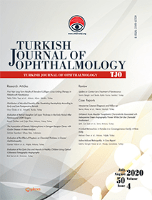
Turk Oftalmoloji Dergisi-Turkish Journal of Ophthalmology
Connecting Research and Clinical Practice in OphthalmologyTurk Oftalmoloji Dergisi - Turkish Journal of Ophthalmology is a premier peer-reviewed publication dedicated to the field of ophthalmology, published by GALENOS PUBL HOUSE. Since its inception in 1997, this Open Access journal has championed the dissemination of high-quality research, fostering an inclusive environment for sharing knowledge and advancements in eye health. With an ISSN of 1300-0659 and an E-ISSN of 2147-2661, the journal serves as a vital resource for researchers, clinicians, and students interested in the latest findings and innovations in ophthalmic sciences. Although its coverage in Scopus has been discontinued since 2017, the journal has garnered a significant rank of 80 out of 114 in the field of Medicine – Ophthalmology, highlighting its relevance and impact within the discipline. Operating out of Istanbul, Turkey, the Turkish Journal of Ophthalmology continues to be a crucial platform for ophthalmologists and researchers to publish their work and advance the understanding of ocular health.
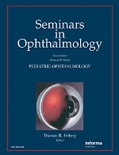
Seminars in Ophthalmology
Advancing the Frontiers of Vision ScienceSeminars in Ophthalmology is a prestigious journal published by Taylor & Francis Inc, dedicated to advancing knowledge in the field of ophthalmology and related medical areas. Established in 1986, this journal has consistently provided a platform for high-quality research and insights, supporting the community with its impactful publications. With an impressive ranking of #55 out of 137 in the Ophthalmology category, the journal currently holds a Q2 quartile in both ophthalmology and miscellaneous medicine as of 2023, reflecting its significant contribution to the discipline. Researchers and practitioners can access a wealth of information covering a comprehensive range of topics, bolstering both clinical practice and academic inquiry. While not an open-access publication, Seminars in Ophthalmology remains a crucial resource for advancing ophthalmic research, fostering collaboration, and disseminating valuable findings in a rapidly evolving specialty.

Translational Vision Science & Technology
Unlocking the Potential of Ophthalmological InnovationTranslational Vision Science & Technology is a premier open access journal dedicated to the advancement of the field of ophthalmology and biomedical engineering. Published by the Association for Research in Vision and Ophthalmology, Inc., this journal has established itself as a leading source of high-quality research since its inception in 2013, achieving a remarkable impact factor reflective of its influential contribution to the field. With an impressive ranking of #21 in Ophthalmology and #120 in Biomedical Engineering within the Scopus database, it sits within the prestigious Q1 quartile for both categories as of 2023, further validating its significance. The journal's scope encompasses a wide variety of topics focused on the intersection of ophthalmological science and technological innovation, welcoming contributions that promote the understanding and treatment of visual disorders. Available as an Open Access publication since 2016, it ensures that cutting-edge research is freely accessible to researchers, practitioners, and students worldwide, facilitating the rapid dissemination of knowledge essential for the advancement of vision science.
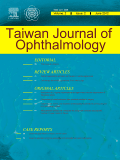
Taiwan Journal of Ophthalmology
Transforming insights into impactful ophthalmic advancements.Taiwan Journal of Ophthalmology is a premier open-access publication dedicated to advancing the field of ophthalmology. Published by Wolters Kluwer Medknow Publications, this journal has been a vital resource for researchers, practitioners, and students since its inception in 2012. With an ISSN of 2211-5056 and an E-ISSN of 2211-5072, it provides a platform for sharing innovative research, clinical findings, and reviews pertinent to eye health and vision science. The journal is indexed in Scopus and currently holds a Q3 quartile ranking within the ophthalmology category, reflecting its commitment to quality and relevance in the medical community. Located in Mumbai, India, Taiwans Journal of Ophthalmology aims to foster discussions and disseminate knowledge that promotes better understanding and treatment of ocular diseases, ensuring that the latest advancements reach a global audience. By embracing open-access policies, the journal underscores its dedication to making valuable insights readily available to all interested parties, thus contributing significantly to the discourse in ophthalmic research.
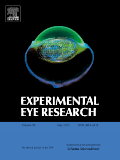
EXPERIMENTAL EYE RESEARCH
Pioneering Insights into Eye Function and DisordersEXPERIMENTAL EYE RESEARCH, published by Academic Press Ltd - Elsevier Science Ltd, is a preeminent journal dedicated to advancing the fields of ophthalmology and neuroscience. With a history of insightful publications dating back to 1961, this journal serves as a critical platform for researchers, professionals, and students interested in the cellular and molecular mechanisms underlying visual processes. The journal boasts impressive rankings, including being placed in the top quartile (Q1) of both the Ophthalmology and Sensory Systems categories, and is recognized in the 2nd quartile (Q2) for Cellular and Molecular Neuroscience. With an impact factor reflecting its significant contribution to the field, EXPERIMENTAL EYE RESEARCH is a valuable resource that promotes the exchange of innovative research and ideas essential for understanding the complexities of eye function and vision-related disorders. Researchers looking to publish their findings or stay abreast of the latest studies will find this journal a vital component of their academic toolkit.
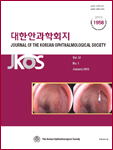
Journal of the Korean Ophthalmological Society
Connecting Scholars to Transform Vision ScienceThe Journal of the Korean Ophthalmological Society, with ISSN 0378-6471 and E-ISSN 2092-9374, is a pivotal resource in the field of ophthalmology, published by the esteemed Korean Ophthalmological Society. Based in South Korea, this journal is committed to advancing knowledge in ophthalmology through the dissemination of research that spans both clinical and experimental studies. Despite its current Q4 ranking in the 2023 Ophthalmology category, it serves as a crucial platform for emerging scholars, practitioners, and students seeking to contribute to and learn from the latest developments in eye care. While the journal does not currently offer open access, it is dedicated to fostering scientific dialogue and innovation within the community. With convergence years from 2018 to 2024, the journal's focus on contemporary issues in ophthalmology positions it as a relevant and timely source of information, critical for those engaged in this dynamic field. For further inquiries, the journal can be contacted at their address in Seoul, South Korea: SKY 1004 BLDG 701, 50-1 Jungnim-ro, Jung-gu, 04508.
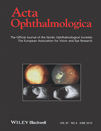
ACTA OPHTHALMOLOGICA
Transforming Eye Care Through Innovative ResearchACTA OPHTHALMOLOGICA, published by Wiley, is a premier academic journal dedicated to advancing the field of ophthalmology and related medical disciplines. Established in 1923 and maintaining esteemed status through converged years until 1994, and then from 2008 to the present, this journal has consistently delivered pioneering research, reviews, and clinical advancements essential for both practitioners and researchers in eye care. With an impressive impact factor and ranking within the top 15 of its category, ACTA OPHTHALMOLOGICA stands as a Q1 journal in both Medicine (Miscellaneous) and Ophthalmology, reflecting its significant contribution to the field. Although it is not an open-access journal, it continues to offer valuable insights and empirical findings that inform clinical practices and innovative research approaches. As such, it remains a vital resource for scholars, clinicians, and students keen to stay at the forefront of ophthalmological science.
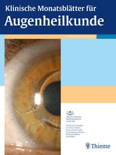
KLINISCHE MONATSBLATTER FUR AUGENHEILKUNDE
Exploring Innovations in Ocular Medicine.Klinische Monatshefte für Augenheilkunde is a distinguished peer-reviewed journal published by Georg Thieme Verlag KG, dedicated to advancing knowledge in the field of ophthalmology and general medicine. With an ISSN of 0023-2165 and an E-ISSN of 1439-3999, this journal has been a reputable platform for researchers and clinicians since its inception in 1963, continuing its impactful contributions through to 2024. Recognized in the Q3 quartile for both Medicine (miscellaneous) and Ophthalmology, this journal serves as a vital resource for those involved in ocular health, offering insights into clinical practices, recent advancements, and essential research findings. Despite its traditional publishing model, the journal retains a significant role in the academic community, as evidenced by its current Scopus ranking of #90/137 in the field of Ophthalmology. It is an essential read for professionals and students aiming to stay at the forefront of ophthalmic research and clinical innovations.
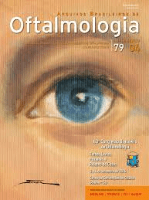
ARQUIVOS BRASILEIROS DE OFTALMOLOGIA
Connecting researchers and clinicians through transformative discoveries.ARQUIVOS BRASILEIROS DE OFTALMOLOGIA is a prominent peer-reviewed journal dedicated to the field of ophthalmology, published by CONSEL BRASIL OFTALMOLOGIA since its inception in 1945. With its commitment to disseminating high-quality research, the journal has transitioned to an Open Access model since 2001, ensuring that vital findings in ophthalmology are freely available to researchers, clinicians, and students alike. Located in São Paulo, Brazil, this esteemed publication occupies a significant position in the medical field, currently holding a Q3 ranking in both the miscellaneous medicine and ophthalmology categories. Although it maintains a legacy of fluctuating impact, recognized for its contribution to the academic community, ARQUIVOS BRASILEIROS DE OFTALMOLOGIA continues to attract a diverse international readership, making it a valuable resource for advancements in eye health, surgical techniques, and ocular research.